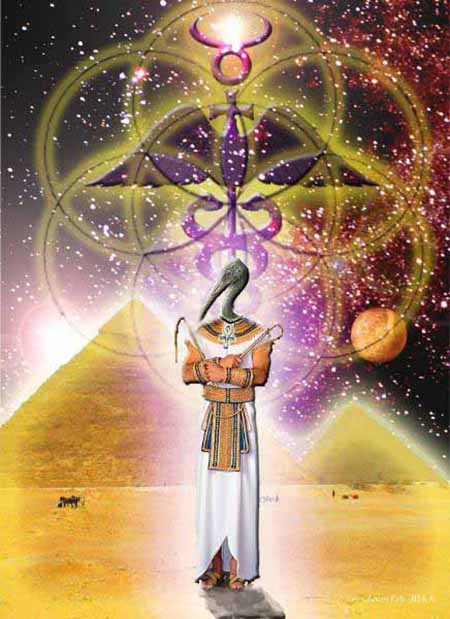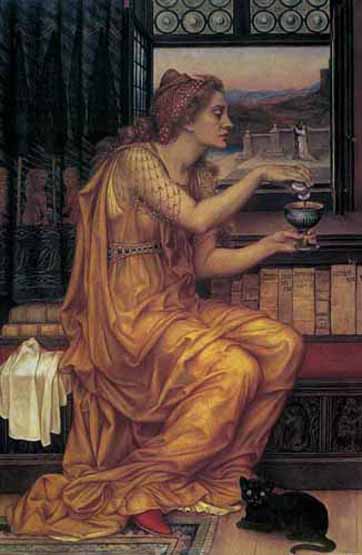

First of all, you have to decided the kind of witch you want to be? Depending on your age, emotional and physical factors in your life, these will determine what you want to do with powers if you had them. For example, teens often lack control over the people in their lives and would like to control how they are treated or simply lash out at adults (emotions). More often than that witchcraft is about manipulating a situation either in a positive way or negative way and usually self-serving.
Reality is a holographic simulation created in the illusion of time to study emotions. Practicing magic and witchcraft could be fun but beware people who use occult practices to try to manipulate others. In the end everyone's life will unfold exactly as it is meant having nothing to do with witchcraft so don't believe everything you hear. Have fun with it to see if you can make changes but unless they are programmed to happen they will not manifest. It's all about power.
We are a physical experiment created to study emotions. Everything that happens has a physical basis in reality even if it appears as magic and illusion. There have been many famous which is and magicians throughout history who is powers amazed those around them and yet they will fall within the parameters of physics and mathematics. You just have to know create the illusion.
If you were emotionally stable it is often fun to work with witchcraft as a tool to better the lives of yourself and those around you because that is what you have been guided to do so it will manifest. If you are a substance abuser or emotionally unstable you will find things not working to your liking. Be very careful when stepping into the sea of witchcraft.
They were endless ways to perform rituals and different types of witches. It is for you to connect with the one that you feel will work best for you. You can also perform ceremonies without actually being a witch just by following instructions in a book that connects for you.
Below is information that I found along the way while creating this file. It was originally written October 2002 then updated in 2020 a year that shaped the face of reality forever. So many people still practicing occult sciences - they are not as popular as they were 18 years ago. This file is written for entertainment purposes only as I have never practice witchcraft so cannot speak from experience.

Has an attitude
Casts nasty spells
Has warts and a crooked nose
Often lives alone with many cats
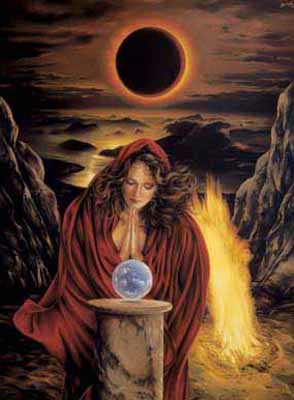
Wants to help everyone.
You can feel her power and energy.
There may be more to her than meets the 'eye'.
Powerful, sexy, alluring, always slim, gorgeous, long hair.
The Garden Variety Halloween Witch
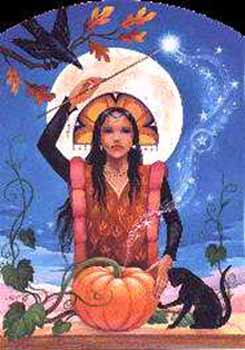
Dressed in black, long dark hair,
Says she is spiritual, but one has to wonder
if she knows the meaning of the word!
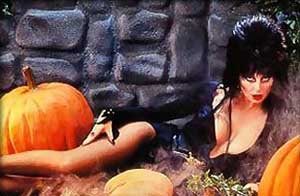
A witch linked with sexual energies
and things go bump in the night.
Witchcraft, in various historical, anthropological, religious and mythological contexts, is the use of certain kinds of supernatural or magical powers. A witch is a practitioner of witchcraft. While mythological witches are often supernatural creatures, historically many people have been accused of witchcraft, or have claimed to be witches. Witchcraft still exists in a number of belief systems, and indeed there are many today who self-identify with the term 'witch'. While the term 'witchcraft' can have positive or negative connotations depending on cultural context (for instance, in post-Christian European cultures it has historically been associated with evil and the Devil), most contemporary people who self-identify as witches see it as beneficent and morally positive. Witches are traditionally stereotyped as being female, however their male equivalents were also often referred to as witches.
Practices and beliefs that have been termed "witchcraft" do not constitute a single identifiable religion, since they are found in a wide variety of cultures, both present and historical; however these beliefs do generally involve religious elements dealing with spirits or deities, the afterlife, magic and ritual. Witchcraft is generally characterised by its use of magic.
Sometimes witchcraft is used to refer, broadly, to the practice of indigenous magic, and has a connotation similar to shamanism. Depending on the values of the community, witchcraft in this sense may be regarded with varying degrees of respect or suspicion, or with ambivalence, being neither intrinsically good nor evil. Members of some religions have applied the term witchcraft in a pejorative sense to refer to all magical or ritual practices other than those sanctioned by their own doctrines - although this has become less common, at least in the Western world. According to some religious doctrines, all forms of magic are labelled witchcraft, and are either proscribed or treated as superstitious. Such religions consider their own ritual practices to be not at all magical, but rather simply variations of prayer.
"Witchcraft" is also used to refer, narrowly, to the practice of magic in an exclusively inimical sense. If the community accepts magical practice in general, then there is typically a clear separation between witches (in this sense) and the terms used to describe legitimate practitioners. This use of the term is most often found in accusations against individuals who are suspected of causing harm in the community by way of supernatural means. Belief in witches of this sort has been common among most of the indigenous populations of the world, including Europe, Africa, Asia and the Americas. On occasion such accusations have led to witch hunts.
Under the monotheistic religions of the Levant (primarily Christianity, and Islam), witchcraft came to be associated with heresy, rising to a fever pitch among the Catholics, Protestants, and secular leadership of the European Late Medieval/Early Modern period and sometimes leading to witch hunts. Throughout this time, the concept of witchcraft came increasingly to be interpreted as a form of Devil worship. Accusations of witchcraft were frequently combined with other charges of heresy against such groups as the Cathars and Waldensians.
The Malleus Maleficarum, a witch-hunting manual used by both Roman Catholics and Protestants, outlines how to identify a witch, what makes a woman more likely to be a witch, how to put a witch to trial and how to punish a witch. The book defines a witch as evil and typically female.
In the modern Western world, witchcraft accusations have often accompanied the Satanic Ritual Abuse hysteria. Such accusations are a counterpart to blood libel of various kinds, which may be found throughout history across the globe.
Practices to which the witchcraft label have historically been applied are those which influence another person's mind, body or property against his or her will, or which are believed, by the person doing the labeling, to undermine the social or religious order.
Some modern commentators consider the malefic nature of witchcraft to be a Christian projection. The concept of a magic-worker influencing another person's body or property against his or her will was clearly present in many cultures, as there are traditions in both folk magic and religious magic that have the purpose of countering malicious magic or identifying malicious magic users.
Many examples can be found in ancient texts, such as those from Egypt and Babylonia. Where malicious magic is believed to have the power to influence the mind, body or possessions, malicious magic users can become a credible cause for disease, sickness in animals, bad luck, sudden death, impotence and other such misfortunes. Witchcraft of a more benign and socially acceptable sort may then be employed to turn the malevolence aside, or identify the supposed evil-doer so that punishment may be carried out. The folk magic used to identify or protect against malicious magic users is often indistinguishable from that used by the witches themselves.
There has also existed in popular belief the concept of white witches and white witchcraft, which is strictly benevolent. Many neopagan witches strongly identify with this concept, and profess ethical codes that prevent them from performing magic on a person without their request.
Where belief in malicious magic practices exists, such practitioners are typically forbidden by law as well as hated and feared by the general populace, while beneficial magic is tolerated or even accepted wholesale by the people - even if the orthodox establishment objects to it.
Probably the most obvious characteristic of a witch was the ability to cast a spell, a "spell" being the word used to signify the means employed to accomplish a magical action. A spell could consist of a set of words, a formula or verse, or a ritual action, or any combination of these. Spells traditionally were cast by many methods, such as by the inscription of runes or sigils on an object to give it magical powers, by the immolation or binding of a wax or clay image (poppet) of a person to affect him or her magically, by the recitation of incantations, by the performance of physical rituals, by the employment of magical herbs as amulets or potions, by gazing at mirrors, swords or other specula (scrying) for purposes of divination, and by many others means.
Conjuring the dead Strictly speaking, "necromancy" is the practice of conjuring the spirits of the dead for divination or prophecy - although the term has also been applied to raising the dead for other purposes. The Biblical 'Witch' of Endor is supposed to have performed it (1 Sam. 28), and it is among the witchcraft practices condemned by Elfric of Eynsham:
The familiar witch of folklore and popular superstition is a combination of numerous influences. The characterisation of the witch as an evil magic user developed over time.
Early converts to Christianity looked to Christian clergy to work magic more effectively than the old methods under Roman paganism, and Christianity provided a methodology involving saints and relics, similar to the gods and amulets of the Pagan world. As Christianity became the dominant religion in Europe its concern with magic lessened.
The Protestant Christian explanation for witchcraft, such as those typified in the confessions of the Pendle Witches, commonly involve a diabolical pact or at least an appeal to the intervention of the spirits of evil. The witches or wizards addicted to such practices were alleged to reject Jesus and the sacraments, observe "the witches' sabbath" (performing infernal rites which often parodied the Mass or other sacraments of the Church), pay Divine honor to the Prince of Darkness, and, in return, receive from him preternatural powers. Witches were most often characterized as women. Witches disrupted the societal institutions, and more specifically, marriage. It was believed that a witch often joined a pact with the devil to gain powers to deal with infertility, immense fear for her children's well-being, or revenge against a lover.
The Church and European society was not always obsessed with hunting witches and blaming them for bad occurrences. Saint Boniface declared in the 8th century that belief in the existence of witches was un-Christian. The emperor Charlemagne decreed that the burning of supposed witches was a pagan custom that would be punished by the death penalty. In 820 the Bishop of Lyon and others repudiated the belief that witches could make bad weather, fly in the night, and change their shape. This denial was accepted into Canon law until it was reversed in later centuries as the witch-hunt gained force. Other rulers such as King Coloman of Hungary declared that witch-hunts should cease because witches do not exist.
The Church did not invent the idea of witchcraft as a potentially harmful force whose practitioners should be put to death. This idea is commonplace in pre-Christian religions and is a logical consequence of belief in magic. According to the scholar Max Dashu, the concept of medieval witchcraft contained many of its elements even before the emergence of Christianity. These can be found in Bacchanalias, especially in the time when they were led by priestess Paculla Annia (188-186).
However, even at a later date, not all witches were assumed to be harmful practicers of the craft. In England, the provision of this curative magic was the job of a witch doctor, also known as a cunning man, white witch, or wiseman. The term "witch doctor" was in use in England before it came to be associated with Africa. Toad doctors were also credited with the ability to undo evil witchcraft. (Other folk magicians had their own purviews. Girdle-measurers specialized in diagnosing ailments caused by fairies, while magical cures for more mundane ailments, such as burns or toothache, could be had from charmers.)
Such "cunning-folk" did not refer to themselves as witches and objected to the accusation that they were such. Records from the Middle Ages, however, make it appear that it was, quite often, not entirely clear to the populace whether a given practitioner of magic was a witch or one of the cunning-folk. In addition, it appears that much of the populace was willing to approach either of these groups for healing magic and divination. When a person was known to be a witch, the populace would still seek to employ their healing skills; however, as was not the case with cunning-folk, members of the general population would also hire witches to curse their enemies. The important distinction is that there are records of the populace reporting alleged witches to the authorities as such, whereas cunning-folk were not so incriminated; they were more commonly prosecuted for accusing the innocent or defrauding people of money.
The long-term result of this amalgamation of distinct types of magic-worker into one is the considerable present-day confusion as to what witches actually did, whether they harmed or healed, what role (if any) they had in the community, whether they can be identified with the "witches" of other cultures and even whether they existed as anything other than a projection. Present-day beliefs about the witches of history attribute to them elements of the folklore witch, the charmer, the cunning man or wise woman, the diviner and the astrologer.
Powers typically attributed to European witches include turning food poisonous or inedible, flying on broomsticks or pitchforks, casting spells, cursing people, making livestock ill and crops fail, and creating fear and local chaos.
In the Scandinavian novel Gutviga, the witches enter Scandinavia and burning down Cathedrals in Trondheim. In the end of the novel, they are all deported out of Europe, and into some unknown places. Gutviga was a girl that they has kidnapped and raised as a witch. She gets hanged in the end of the novel.
The belief in witchcraft and its practice seem to have been widespread in the past. Both in ancient Egypt and in Babylonia it played a conspicuous part, as existing records plainly show. It will be sufficient to quote a short section from the Code of Hammurabi (about 2000 B.C.E.). It is there prescribed,
In the Hebrew Bible references to witchcraft are frequent, and the strong condemnations of such practices which we read there do not seem to be based so much upon the supposition of fraud as upon the "abomination" of the magic in itself.
Verses such as Deuteronomy 18:11-12 and Exodus 22:18 "Thou shalt not suffer a witch to live" provided scriptural justification for Christian witch hunters in the early Modern Age (see Christian views on witchcraft). The word "witch" is a translation of the Hebrew kashaph, "sorceress". The Bible provides some evidence that these commandments were enforced under the Hebrew kings:
The New Testament condemns the practice as an abomination, just as the Old Testament had (Galatians 5:20, compared with Revelation 21:8; 22:15; and Acts 8:9; 13:6). The word in most New Testament translations is "sorcerer"/"sorcery" rather than "witch"/"witchcraft".
Jewish law views the practice of witchcraft as being laden with idolatry and/or necromancy; both being serious theological and practical offenses in Judaism. According to Traditional Judaism, it is acknowledged that while magic exists, it is forbidden to practice it on the basis that it usually involves the worship of other gods. Rabbis of the Talmud also condemned magic when it produced something other than illusion, giving the example of two men who use magic to pick cucumbers (Sanhedrin 67a). The one who creates the illusion of picking cucumbers should not be condemned, only the one who actually picks the cucumbers through magic. However, some of the Rabbis practiced "magic" themselves. For instance, Rabbah created a person and sent him to Rabbi Zera, and Rabbi Hanina and Rabbi Oshaia studied every Sabbath evening together and created a small calf to eat (Sanhedrin 65b). In these cases, the "magic" was seen more as divine miracles (i.e., coming from God rather than pagan gods) than as witchcraft. Judaism also makes clear that witchcraft while always forbidden to Jews, may be performed by Gentiles outside the holy land (i.e. Israel).
Divination and Magic in Islam encompass a wide range of practices, including black magic, warding off the evil eye, the production of amulets and other magical equipment, conjuring, casting lots, astrology and physiognomy. Muslims do commonly believe in magic (Sihr) and explicitly forbid its practice. Sihr translates from Arabic as sorcery or black magic. The best known reference to magic in Islam is the Sura Al-Falaq (meaning dawn or daybreak), which is a prayer to ward off Black Magic.
Many Muslims believe that the devils taught sorcery to mankind.
However, whereas performing miracles in Islamic thought and belief is reserved for only Messengers and Prophets; supernatural acts are also believed to be performed by Awliyaa - the spiritually accomplished. Disbelief in the miracles of the Prophets is considered an act of disbelief; belief in the miracles of any given pious individual is not. Neither are regarded as magic, but as signs of Allah at the hands of those close to Him that occur by His will and His alone.
Muslim practitioners commonly seek the help of the Jinn (singular--jinni) in magic. It is a common belief that jinn can possess a human, thus requiring Exorcism. (The belief in jinn is part of the Muslim faith. Imam Muslim narrated the Prophet said: "Allah created the angels from light, created the jinn from the pure flame of fire, and Adam from that which was described to you (i.e., the clay.)") To cast off the jinn from the body of the possessed, the "ruqya," which is from the prophet'ssunnah is used. The ruqya contains verses of the Qur'an as well as prayers which are specifically targeted against demons. The knowledge of which verses of the Qur'an to use in what way is what is considered "magic knowledge".
Students of the history of religion have linked several magical practices in Islam with pre-islamic Turkish and East African customs. Most notable of these customs is the Zar Ceremony.
Africans have a wide range of views of traditional religions. African Christians typically accept Christian dogma as do their counterparts in Latin America and Asia. The term witch doctor, often attributed to Zulu inyanga, has been misconstrued to mean "a healer who uses witchcraft" rather than its original meaning of "one who diagnoses and cures maladies caused by witches". Combining Roman Catholic beliefs and practices and traditional West African religious beliefs and practices are several syncretic religions in the Americas, including Vodou, Obeah, Candomble, Quimbanda and Santeria.
In Southern African traditions, there are three classifications of somebody who uses magic. The thakathi is usually improperly translated into English as "witch", and is a spiteful person who operates in secret to harm others. The sangoma is a diviner, somewhere on a par with a fortune teller, and is employed in detecting illness, predicting a person's future (or advising them on which path to take), or identifying the guilty party in a crime. She also practices some degree of medicine. The inyanga is often translated as "witch doctor" (though many Southern Africans resent this implication, as it perpetuates the mistaken belief that a "witch doctor" is in some sense a practitioner of malicious magic). The inyanga's job is to heal illness and injury and provide customers with magical items for everyday use. Of these three categories the thakatha is almost exclusively female, the sangoma is usually female, and the inyanga is almost exclusively male.
In some Central African areas, malicious magic users are believed by locals to be the source of terminal illness such as AIDS and cancer. In such cases, various methods are used to rid the person from the bewitching spirit, occasionally Physical abuse and Psychological abuse.
Children may be accused of being witches, for example a young niece may be blamed for the illness of a relative. Most of these cases of abuse go unreported since the members of the society that witness such abuse are too afraid of being accused of being accomplices. It is also believed that witchcraft can be transmitted to children by feeding. Parents discourage their children from interacting with people believed to be witches.
Russia, and its surrounding area for example, have, much like other cultures, their own witchcraft and superstitious tales. And again, much like other societies, these tales clash with those of the church and traditional religious thoughts. However, today, acceptance of healing practices in contemporary Russian folklore are common. By looking at the different types of superstitions then understanding their purposes we can comprehend their impact on the people and the church and can better understand the culture of Russia and its folklore.
Casual encounters are ones of surprise and unexpectedness and puts the character at the mercy of the supernatural being. The ritual encounter however, is a more planned event, where the individual is the subject and he or she knows beforehand the kind of experience they will take part in. The Russian word for witch, shows exactly that (the literal translation means "The one who knows").
Russia, as well as many other cultures, produces tales with both encounters. These parts of folklore including omens, guardian spirits, and fate - all have little to do with the eastern orthodox religion yet seem to appear in much of the folklore of the 19th century. Visual omens, often in dreams, are well-known, including a gloved man indicating death, fish predicting marital luck, and childrenŐs games foretelling marital life, fertility and even wars. Passed down are tales of how other indicators, include the crying of a baby that is not within sight, the hammering of nails off in the distance, and also ringing of the ears, can foretell different things.
1320, Pope John XXII formalized persecution of Withes in Europe, by allowing the Inquisition to condemn sorcery.
1484, Pope Innocent VIII issued a 'papal bull' that allowed Cramer & Springer, two members of the Inquisition, to publish (in 1486) the Malleus Maleficaru', a book that became known as 'the Witch hunter's bible'. In this book, they recorded what they believed to be the acts of Witches, describing Witchcraft as a major threat to the Christian religion and society as a whole. They also described Witches as being 'slaves of Satan'.
1542, in England first statute against Witchcraft issued by Henry VIII.
1563, second statute against Witchcraft issued by Elizabeth I.
1611, James I had the first English translation of the Christian Bible published, but believing Witches to be responsible for plotting to sink his ship and kill his family, he had the line 'Thou shall not suffer a poisoner to live' changed to, 'Thou shall not suffer a Witch to live' to reflect his disdain.
In 1645, Mathew Hopkins appointed himself as 'Witchfinder General' in East Anglia. Although thought that his persecution of Witches was enacted throughout the country, he actually only had sway in East Anglia.
1692, the Salem Witch trials took place in Salem Massachusetts.
1888, the Hermetic Order of the Golden Dawn was founded by W.R. Woodman.
1951, repeal of the 1736 Witchcraft act in England.
The altar is a principle part of magick, ritual, and daily life. See if you can set up a sacred space in your home with an altar. Your altar does not have to be big. It does not have to be complex. What is important is you feeling of comfort with the items. You may vary the items on your altar with the seasons, holidays, other things. You can place your altar where no one else can see it - or in public view. The size and shape of your table or table top can vary and reflect the purpose of your altar.
There are two Cloths. The first cloth is usually a specific color that relates to the purpose of the altar. It covers the table before anything else goes upon it. Most people I know uses one with a design created for this type of work. The working cloth goes over it. It is a cloth that is safe to drip things on, like wax or oil. This is to protect the usually more expensive altar cloth, which often has a symbol pattern design on top.
Four Quarter Candles in colors that are appropriate to the element and quarter they represent. Yellow or White= Air and East; Red or Burgundy= Fire and South; Blue=Water and West; Green or Brown= North and Earth. Quarter candles are not always on the altar. Many circles will put free standing pillars or stands to place these candles upon on the out side edge of the sacred circle for ritual. This is one of those areas where a ritual altar may differ from the home altar used daily. Illumination candles- are there to provide light. They vary in size, color, shape, and scent. The Goddess candle is a silver or white candle (provided that the East candle is yellow and not white) that represents the Goddess. Matches or lighter.
The Candle Snuffer is used to put out candles at the appropriate time. There are many viewpoints on whether of not this should be used in place of simply blowing them out or snuffing a candle with wet finger tips. If you have a candle that has been burning long enough for a lot of liquid wax to be present, blowing it out can also get hot wax in your eyes or on the other altar things near by. Snuffing candles with your fingers, even if they are wet can cause injury.
The Cauldron is a symbol of the Goddess and corresponds to the
element of Water. It is used in ritual as a container in which
Magickal transformations can occur and is often a focal point of
a ritual. During spring rites, it can be filled with water and fresh flower
petals and in winter, fires can be lighted within the cauldron to
symbolize the rebirth of the Sun. It can also be filled with water
and used for scrying. Cauldrons are often three-legged and made of iron.
The Chalice symbolizes the Goddess and fertility and is related to the element of Water. It can be used to hold water or ritual wine. The chalice can be made out of any substance, silver, brass, wood or soapstone.
The Wand is an instrument of invocation, and corresponds to the element of Air. It is sometimes used to direct energy, to scratch Magickal symbols in the ground, or to stir the contents of a cauldron. Woods such as willow, elder, oak, hazel and apple are traditionally used for the wand, but any fairly straight piece of wood can work. Many carve special symbols into the wood, or attach gems and stones to personalize the wand.
The Censer or incense burner, represents the element of Air. It can be a big, swinging metal contraption like those used in Catholic churches or a small wooden stick incense holder. A bowl filled with sand or salt can also be used. The sand or salt absorbs the heat from the charcoal, or incense sticks or cones can be pushed into it.
The Athame is the magical knife commonly linked with the element of Fire. It is never used for cutting purposes, or for any purposes outside the circle. The Athame is used in ritual to direct energy and is
an instrument of power and manipulation. The blade is often dull and double-edged and the handle is usually black to absorb power.
The Pentacle represents the element Earth, and is often used as a symbol of protection - it can be hung over doors and windows or worn around the neck as a pendant. The five points on a pentacle represent each of the five elements: Earth, Air, Fire, Water and Spirit. In ritual, the pentacle is used to evoke spirits and to consecrate other ritual tools. It can be made brass, silver wood, clay, or any other material that can be engraved.
The Broomoften is used to purify space before a circle is cast. It is related to the element of Water and is used in many water spells that involve cleansing. It also historically has been used to protect the home by laying it across the door. To make a magick broom, it is suggested that you use an ash staff, birch twigs and a willow binding (ash is protective, birch cleansing, and willow is sacred to the Goddess.)
Consecrated Oil is on the altar for anointing and blessing of tools and circle members or the solitary practitioner.
Herbs used alone or in combinations with other herbs
Bell
Book of Shadows is a collection of spells, rituals, invocations, dreams, ideas and thoughts, information and personal observations of a witch or group of witches. It is a personal document, written for, and by its readers. Sections may include:
The Charge of the Goddess
Invocations
Properties of Herbs
Properties of Herbal Blends
Properties of Gemstones
Magick Recipes
1. Cast Your Circle -- "I cast this Circle and charge it to draw in only the most perfect, powerful, correct, and harmonious energies."
2. Invocation of the God and Goddess
3. State Your Purpose: "I am here to......"
4. Thank God and Goddess
5. Release the Circle
The different tools on the altar will then be used in accordance with your purpose. Ex: To get rid of something - you can write the information on a piece of paper then burn it in the cauldron.
The 'Book of Spells' you follow will guide what you do.
Begin by selecting something in your life that you want to change. Then find a previously written book of spells and review how that spell was done, before you actually go through with casting your spell.
Next, perform the spell or rite.
Later, when you develop your own spells, write them down in a your own Book of Shadows.
Raise hands in Goddess position (spread in a V over your head
feet apart), then slowly lower them and cross them into the God
position (arms crossed over your chest, feet together)
feeling the power coursing down your arms throughout your body.
Light a candle that give lots of light
Light the incense at the East, clap hands over the flame to extinguish
"Creature of Air.
I cleanse and consecrate thee to remove all negativity in this world."
Pass your hand over the incense three times to banish all negativity,
Your altar is prepared. You are now ready to cast the circle and begin workings of magic.
Day 10: October 30, 2002 - Magic Day
If a man has put a spell upon another man and it is not justified, he upon whom the spell is laid shall go to the holy river; into the holy river shall he plunge. If the holy river overcome him and he is drowned, the man who put the spell upon him shall take possession of his house. If the holy river declares him innocent and he remains unharmed the man who laid the spell shall be put to death. He that plunged into the river shall take possession of the house of him who laid the spell upon him.
"And Saul disguised himself, and put on other raiment, and he went, and two men with him, and they came to the woman by night: and he said, I pray thee, divine unto me by the familiar spirit, and bring me him up, whom I shall name unto thee. And the woman said unto him, Behold, thou knowest what Saul hath done, how he hath cut off those that have familiar spirits, and the wizards, out of the land: wherefore then layest thou a snare for my life, to cause me to die?" (The Hebrew verb "Hichrit" translated in the King James as "cut off", can also be translated as "kill wholesale" or "exterminate")
Blessing Guidelines to a Magic Life
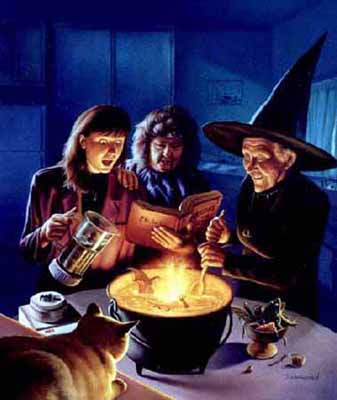

Breath deeply, ground and center.
imagine a sparkling light around the incense
Light the candle at the South
"O creature of Fire
I cleanse and consecrate thee
to remove all negativity in this world
So mote it be"
Pass your hand over the flame three times, as above
Do the same for West and North, with water and a bowl of salt, respectively
Beginning North, move your hands over the altar five times, mixing
the powers of the elementals. Tap the hilt of the knife on the altar
at your right five times to seal.
